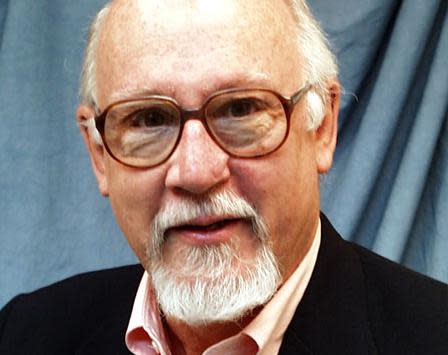University of Alabama journalism grad tells story of Polly Klaas kidnapping | DON NOBLE
Raising children in America changed after the Oct. 1, 1993, abduction of Polly Klaas in peaceful Petaluma, California.
Parents all over the country were in various degrees seized with fear: “stranger danger.” Kim Cross, author of “In Light of All Darkness: Inside the Polly Klaas Kidnapping and the Search for America’s Child,” writes, “The days of free-range childhood were vanishing.”
More: Novel explores old murder mystery in Birmingham | DON NOBLE
Thirty years later, some parents are still reluctant to let their children walk to school, the corner store or the local park. It seems safer to have kids in the house, playing video games.
Exercising the same attention to detail, minute-by-minute reporting, as she had done in her bestseller “What Stands in a Storm,” about the April 27, 2011, tornado in Tuscaloosa, Cross narrates the kidnapping, the search for Polly, the arrest of the perpetrator, his interrogations and trial and the after-effects, positive and negative. Beginning her research about 2015, Cross conducted some 300 interviews and had access to police reports, FBI records, recorded interviews and transcripts.
The story begins in most unusual circumstances.
Twelve-year-old Polly Klaas was having a sleepover with two friends in her bedroom at home, when a stranger came in the bedroom door with a knife, tied up Polly’s friends and took her away. Polly's mother and sister were in another bedroom, only a few feet away.
The abductor did not wear a mask, had no connection to the family or neighborhood. It seemed perfectly random, unlike many abductions which turn out to be custody disputes. Polly’s father, however, divorced from her mother and living elsewhere, was cleared of suspicion very quickly.
Police considered the possibility of a prank, but within a day or so it became clear that the abduction was real. This was crucial since in cases where the abducted person is killed, the killing happens, in 89% of the cases, within the first 24 hours. The Evidence Response Team conducted an examination of the crime scene with exquisite thoroughness — every fingerprint, hair, fiber, dust.
The local police and the FBI cooperated fully, not competitively, and this is now standard. A profiler and a sketch artist were used along with forensic experts. New techniques in using and interpreting polygraphs were employed.
Cross details the small mistakes police made in their investigation — none of which could have changed the outcome.
Because they initially suspected a hoax, police seized on small inconsistencies and questioned Polly’s two friends overly aggressively, causing additional trauma. They were even asked to reenact the crime. Interviews are conducted much more gently now.
In what was then a fairly new practice, it was quickly decided to enlist the media for publicity, and to encourage volunteers to phone in tips, look for clues, and search for Polly.
Over 1,000 friends and neighbors volunteered. Large amounts of money were raised, celebrities such as Winona Ryder and Robin Williams became involved, sometimes in fundraising events, Polly’s photograph was reproduced and distributed by the millions, and on several continents. This practice, extended to photos on milk cartons, became widespread over time.
As we know, Polly was killed, her body found and the killer, a repeat offender, sent to prison. However, when it was learned that the killer was a repeat offender, a kidnapper, and in fact had been paroled only three months before Polly's abduction, there was a huge reaction and revulsion.
California, along with many other states, put in place the "three strikes" laws, in which three felonies might result in a life sentence. These new "tough-on-crime" laws imposed various mandatory sentences, reduced the power of judges to assign sentences and reduced the flexibility of parole boards.
These laws were not thought through carefully, and prisons in California and elsewhere filled up quickly with people guilty of drug possession, firearms violations, simple robbery and so on, not violent crimes. Many of those laws have since been reconsidered.
Although this is not a novel, the facts in this meticulous true crime report are as enthralling as they were in Truman Capote’s “In Cold Blood,” carrying the reader along and showing the severe psychological effects of the kidnapping and the investigation on everyone involved: family, friends, police.
All over the country, millions were emotionally engaged in the search.
It is not an exaggeration to say that, for a while, Polly was “America’s Child.”

Don Noble’s newest book is Alabama Noir, a collection of original stories by Winston Groom, Ace Atkins, Carolyn Haines, Brad Watson, and eleven other Alabama authors.
“In Light of All Darkness: Inside the Polly Klaas Kidnapping and the Search for America’s Child”
Author: Kim Cross
Publisher: Grand Central
Pages: 464
Price: $32.50 (Hardcover
This article originally appeared on The Tuscaloosa News: UA journalism grad tells story of Polly Klaas kidnapping | DON NOBLE
